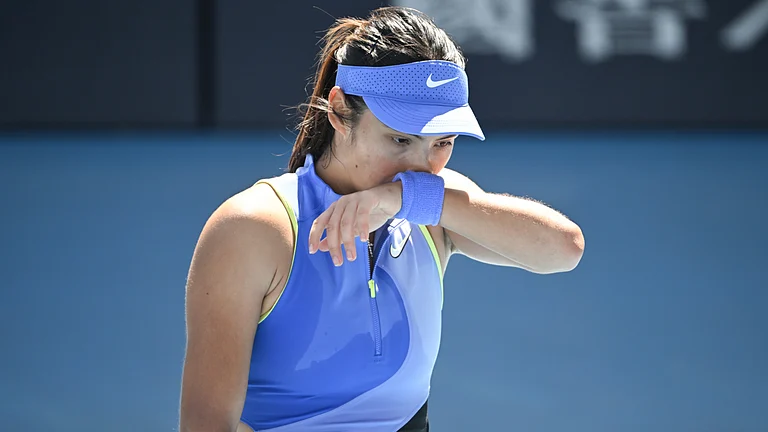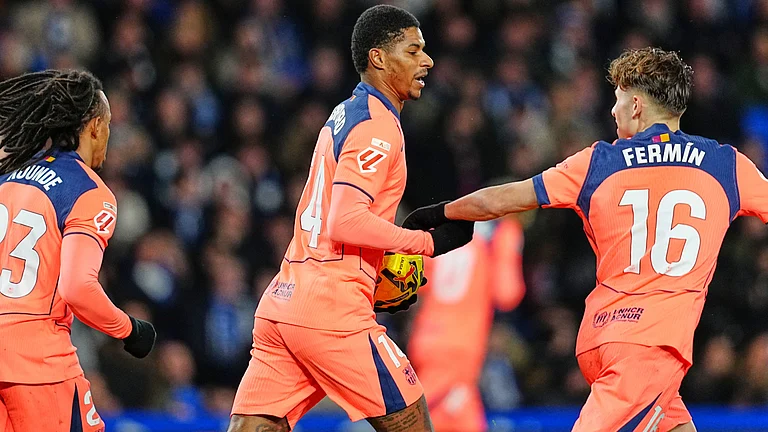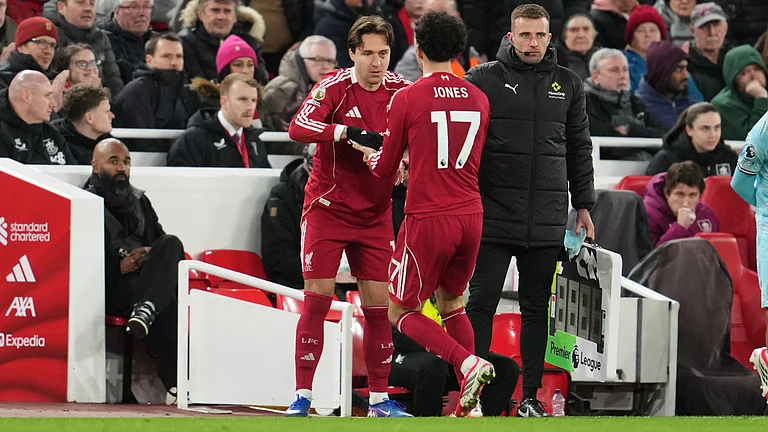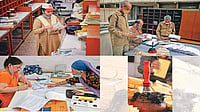Even before the Centre acted to manage the pandemic last year, unscrupulous private traders were ready to fleece the unsuspecting and suffering people. The Centre was unprepared; the merchants had everything in place. It was in end-March last year that the Narendra Modi government declared the first nationwide lockdown. By then, the private sellers had imported and hoarded the key devices and ingredients needed by COVID-19 patients. Later, they sold them at fantastic profits.
Consider the case of oxygen concentrators, which are in huge shortage during the current second wave of the pandemic, and led to the deaths of thousands of people—at homes, on the streets, in parking lots, and at hospitals’ reception areas. The import of such therapy apparatus, as they are called, shot up by three times to 1.74 million units in 2019-20 or before the first lockdown. In 2020-21, they further zoomed to 2.5 million units, a five-fold increase of the 2017-18 imports, a clear sign that the traders were smarter than the government.
ALSO READ: Twice Orphaned
Although these were legit imports, their sale at premiums in the black was not. In March and April this year, the market was flooded with two brands of the Remdesivir injection, a key drug that earlier vanished from the markets during the debilitating second wave. Later, it was revealed that the Sikkim-based firm, which made one of them, was shut down since 2017. Experts speculated how the second that was made in Tamil Nadu found its way to north India. Both were fakes.
In both cases, the nimble and flexible private trade predicted the pandemic needs, and took the right decisions, even if they were dishonest. This happened even as the government floundered, and the policymakers were flustered and paralysed into inaction. Only on April 28, 2021, at least three-four weeks after the onset of the second wave, did the Centre ease imports of oxygen-related concentrators, plants, cryogenic air separation units, canisters, cylinders etc.
ALSO READ: The Empire Of Cruelty
Food and consumer affairs minister Piyush Goyal said that the decision would fulfil the demand for the devices. Importers have to inform the respective states about the quantities they have purchased. But a senior government official claims that this is a case of too little, too late. “If we had taken the decision in March, there would be no black marketing. We could have saved the lives of some people, who died in the second wave. New imports will take 3-4 weeks, and help in the third wave.”
What the traders did, and the manner in which they behaved proactively, signifies the greatest and gravest failure of the Centre. Instead of being prepared with an inventory of devices and oxygen that would be required for the second wave, which was more severe than the first in most Western nations, India remained complacent as if it was in a post-Covid bubble. We ran out of vaccines, beds, medicines and oxygen, and were unable to protect our citizens across the country.
ALSO READ: The Seventh Seal
Only during a public health crisis, or a natural disaster, can one gauge how callous or sensitive a ruling regime is. It is in these situations that one understands how committed a government is to save lives. The fact that this wasn’t the case this time is evident from the vaccine economics that was played out in the past few months. This continued after the beginning of the second wave, when fear propelled more people to get vaccinated. This was the time when we debated about vaccine prices.
India’s two vaccine firms, Serum Institute of India and Bharat Biotech, set different prices for the drug to be sold to the Centre (Rs 150 per dose), states (Rs 300-400) and private hospitals (Rs 600-1,200). In an affidavit to the Supreme Court, the Centre said that this was due to varying volumes, which dictated prices. “It is pertinent to note that the central government... placed large purchase orders for vaccines as opposed to the state government or private hospitals, and therefore this reality has some reflection in the prices negotiated,” it said.
ALSO READ: The Complete Covid Chargesheet
But the Centre supplied the vaccines free of cost at its own locations for the frontline workers and people over 45 years. Now that those over 18 years need to get vaccinated, the states were urged to place global tenders to procure the vaccines as domestic supply lagged behind the potential demand. Delhi’s deputy chief minister Manish Sisodia said that the move was akin to “forcing” the states to do so; it would lead to discord among states, and favour those that have money.
Ever since Modi came to power in 2014, the worsening Centre-State relationship has become a constant refrain. Although the Centre talked about cooperative federalism, and took measures to transfer more of central revenues to the states, the latter had constant complaints. “We thought that with a chief minister becoming a prime minister, it will ensure a smooth relationship. But it hasn’t happened,” says N.R. Bhanumurthy, vice chancellor, B.R. Ambedkar School of Economics.
ALSO READ: Jantar Mantar Is Just A Sundial. Period
Apart from this aspect, Modi failed to deliver on the economic front. Over the past seven years, economists believe that two trends dominated the government’s policies. The first was shock and awe, or a dependence on disruptive rather than constructive decisions. Whether it was GST, demonetisation or the insolvency code, the actions weren’t thought through, and required changes at regular intervals. The laws were passed in great haste, feels E.A.S. Sarma, a former civil servant.

According to Alok Sheel, RBI Chair Professor at ICRIER, the performance on the economic front was an unmitigated disaster, which practically destroyed the economy. “The pre-Covid annual growth was 4 per cent. Now, we talk about a recovery back to a similar level, which seems doubtful. Until 2023-24, we may achieve an annual average of 3.5 per cent, which global agencies had projected before the country was hit by the pandemic’s second wave,” he explains.
If one compares the seven years of Modi with the last seven years of Manmohan Singh, the annual average growth rates were 3.8 per cent and 6.7 per cent, respectively. Of course, the former figure accounts for the huge negative growth in 2020-21 due to Covid. According to K.P. Kannan, honorary fellow, Centre for Development Studies, instead of the projections of up to 10 per cent positive growth in 2021-22, we may now see a repeat of the negative growth seen in the previous year.
The second trend that dominated Modi’s economics was the lack of intent, rather than implementation. Although the two regimes enacted a slew of laws—despite the slogan of minimum governance—the aims were political and rhetorical, rather than to achieve economic gains. Economics wasn’t a priority, as the intention was to win elections. Both in 2014 and 2019, the government needed to take corrective action to put the economy back on the rail, and miserably failed to do so.
ALSO READ: ‘Modi Brought India To Its Knees’
Take the case of unemployment, which has caused havoc among households. Since 2014, joblessness became a huge problem, even as economists warned that growth wasn’t able to address the declining employment elasticity, i.e. the lesser capacity to create jobs. The situation is grim as the government hasn’t conducted an official employment survey since 2017-18. Working with earlier data, experts like Kannan feel that “this was a devastating period with job-loss growth”.
S.L. Rao, former director general, NCAER, cites another example of the Centre’s apathy towards rising joblessness. He says that while the first lockdown last March was sensible, officials failed to reckon with the impact on migrant workers. “There was no help for them, which led to their exodus to the villages,” he adds. Millions of people walked back to their villages, went hungry, and stayed without jobs and money for months. This was especially true of contractual labour.
ALSO READ: The People’s Prime Minister
A similar situation may rattle India as the dangerous second wave in the metros and cities forced people to pack up and go back to their villages. The reverse migration may accentuate Covid cases, as people move in large numbers, and may even spread the virus in rural areas. Already, there are reports of the ‘Kumbh” factor, which led to a spike in Covid cases in the villages. If this trend continues, the public health crisis in the third wave may be worse than in the second one.
What the Modi regimes fail to comprehend is the difference between normal times and crises. In the former, policies like digitisation of welfare schemes appeal to the people, especially voters. Access to cooking gas and huge improvement in the last-mile electricity connectivity helps. Rural development in the form of affordable housing and roads can encourage people to vote for the ruling government. But this election-led governance model breaks down during an emergency.
During a calamity, when people die randomly only because the policymakers failed to predict or take premeditated actions to mitigate the impact, there is a rise in public anger. The rage is about the loss of lives, but it is also about the lack of amenities, whose needs the government failed to anticipate. “I’ll never forget who was responsible for the lack of oxygen when my mother died in my arms due to asphyxia, and so did scores of others around me,” says a Delhi-based resident.
ALSO READ:


























